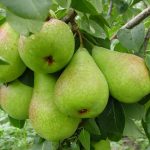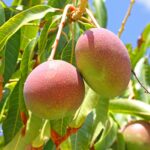The evolution of the US mango market in charts

In this installment of the ‘Agronometrics In Charts’ series, Sarah Ilyas studies the state of the US mango market. Each week the series looks at a different horticultural commodity, focusing on a specific origin or topic visualizing the market factors that are driving change.
Peru's mango export season is drawing to a close after a dramatic decline in volumes while Mexico, Guatemala, and Nicaragua are currently at the forefront of harvests and packing. According to the National Mango Board, it is anticipated that overall mango volume shipped from week 14 to week 19 will be approximately 1% higher year-over-year, with arrivals expected during weeks 15 to 20. Specifically, the 2024 Mexican season is expected to be about 2% higher year-over-year, the Guatemalan season about 6% higher, and the Nicaraguan season about 7% higher.
Source: USDA Market News via Agronometrics.
(Agronometrics users can view this chart with live updates here)
Peru
The Peruvian mango export sector has experienced a substantial setback during the 2023-2024 campaign. According to reports, Peru exported 75,167 tons of fresh mangoes during this period, representing a staggering 66.9% decrease compared to the previous campaign.
“The heavy rainfall in April and May 2023 due to Cyclone Yaku caused the land, especially the retentive ones, to have a lot of humidity, also affecting the infrastructure of irrigation canals, roads, unfavorable conditions for the farmer to work the field,” says Carlos Iván Vílchez Peralta, president of the Peruvian Association of Mango Producers and Exporters (APEM). “Once the 2022-2023 campaign ended, that had an impact on the field, the land, and the plants,” he added.
The Kent variety, comprising over 90% of Peru's mango exports, bore the brunt of the climatic challenges, especially grappling with heightened temperatures that hindered proper flowering and cultivation, posing significant challenges in its growth and development. Beyond the statistical decline in exports, the social and economic repercussions of reduced mango production in Peru are profound.
Vílchez Peralta emphasized the significant impact on the local population engaged in mango cultivation, with approximately 70% facing unemployment due to the decline in fruit yields. The situation has led to the closure of fields and industrial plants, exacerbating unemployment rates and economic instability in affected regions.
 Source: USDA Market News via Agronometrics.
Source: USDA Market News via Agronometrics.
(Agronometrics users can view this chart with live updates here)
Mexico
The Mexican mango season began the second week of January and will run until the last week of October with a projection of approximately 97 million boxes, according to projections by the National Mango Board. Mexico’s main varieties are: Tommy Atkins (34%), Ataulfo/Honey (27%), Kent (25%), Keitt (11%) and others (3%).
The United States, as the primary importer, receives significant volumes of mangoes from Mexico, particularly the Tommy Atkins and Ataulfo/Honey varieties. Despite experiencing an 11% increase in mango production so far, Mexico has encountered challenges in meeting export expectations. According to the National Mango Board, week 13 saw 15% lower incoming volumes compared to week 13 of 2023.
 Source: USDA Market News via Agronometrics.
Source: USDA Market News via Agronometrics.
(Agronometrics users can view this chart with live updates here)
Guatemala
Guatemala’s peak season begins in April and runs through June. During this time, the United States purchases most of that supply. Guatemalan mango exports increased 16% during the 2023-24 season. According to the National Mango Board, by the conclusion of week 13, Guatemala dispatched 48% of the total volume sent so far.
 Source: USDA Market News via Agronometrics.
Source: USDA Market News via Agronometrics.
(Agronometrics users can view this chart with live updates here)
Nicaragua
The mango season in Nicaragua commenced in the final week of February and is anticipated to continue until the second week of June, with an estimated yield of approximately 700,000 boxes, 3% lower than the volume sent last season. During the previous season, Nicaragua primarily cultivated Tommy Atkins mangoes, which constituted 98% of its total production, with Keitt mangoes comprising the remaining 2%.
In terms of recent shipments, during week 13, Nicaragua dispatched approximately 22,600 boxes, contributing to a total of 159,783 boxes for the season. By comparison, during the corresponding week of the previous year, Nicaragua had shipped 72,312 boxes, amounting to a total of 342,649 boxes for the entire season.
 Source: USDA Market News via Agronometrics.
Source: USDA Market News via Agronometrics.
(Agronometrics users can view this chart with live updates here)
In our ‘In Charts’ series, we work to tell some of the stories that are moving the industry. Feel free to take a look at the other articles by clicking here.
All pricing for domestic US produce represents the spot market at Shipping Point (i.e. packing house/climate controlled warehouse, etc.). For imported fruit, the pricing data represents the spot market at Port of Entry.
You can keep track of the markets daily through Agronometrics, a data visualization tool built to help the industry make sense of the huge amounts of data that professionals need to access to make informed decisions. If you found the information and the charts from this article useful, feel free to visit us at www.agronometrics.com where you can easily access these same graphs, or explore the other 21 commodities we currently track.














































